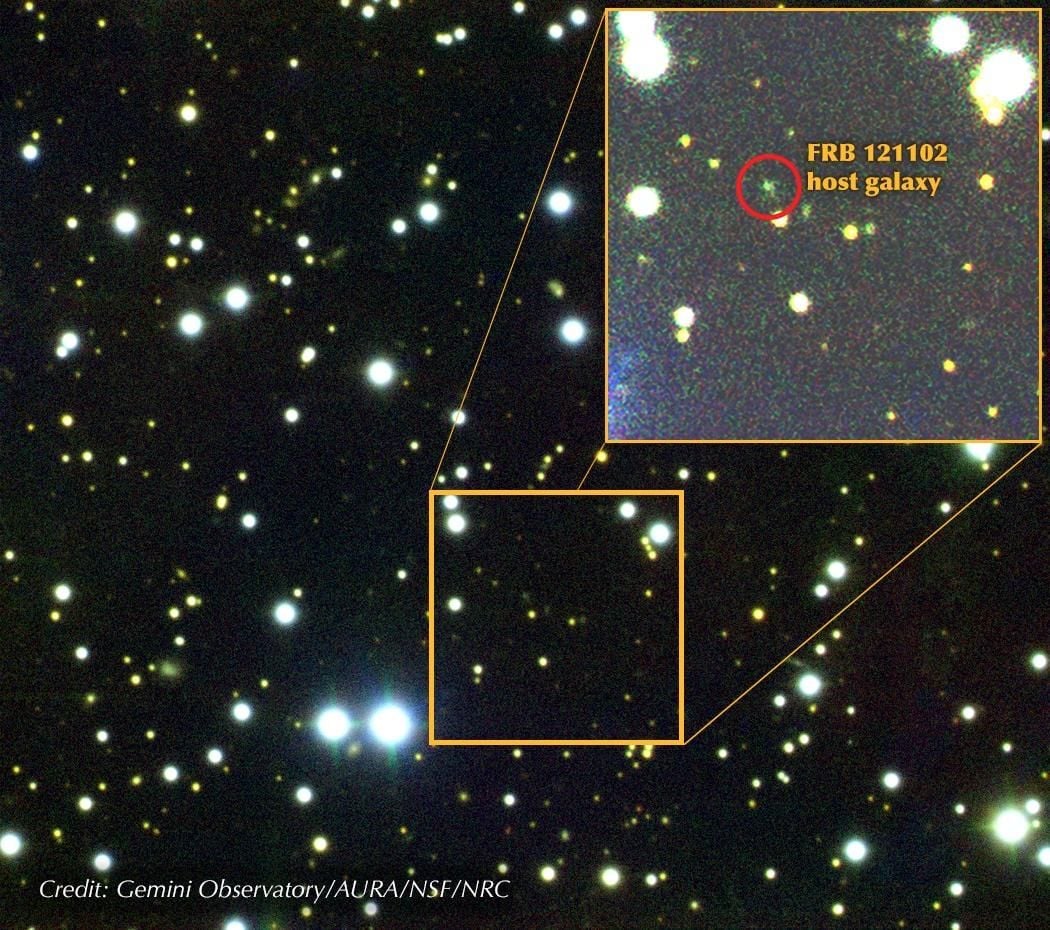Mysterious Fast Radio Bursts Traced to Dwarf Galaxy in the Auriga Constellation
Knowing where they originate will help researchers understand what creates the mysterious high-energy signals
/https://tf-cmsv2-smithsonianmag-media.s3.amazonaws.com/filer/d2/6d/d26d16fc-2a4e-4459-b220-393679a81fb8/frb.jpg)
In 2007, researchers examining data from Australia’s Parkes Observatory noticed something they had never seen before: fast bursts of radio waves lasting just milliseconds. But it wasn’t clear whether the bursts, dubbed Fast Radio Bursts or FRBs, were real.
“People said, ‘What if it’s local interference, what if it's sheep running into electric fences?’” Shami Chatterjee, an astronmer and FRB researcher at Cornell tells Mark Strauss at National Geographic.
But in 2012, the Arecibo radio telescope in Puerto Rico also picked up an FRB, confirming the signal's cosmic origin. Now, Chatterjee and his colleagues have pinpointed exactly where in the night sky that mysterious burst, known as FRB 121102, is coming from, describing their results in a study published recently in the journal Nature.
Prior to this study, astronomers believed that the signal emanated from somewhere within our Milky Way galaxy. But the new research found that the signal originates from another source: a galaxy 3 billion light years away in the constellation Auriga. Finding the source, however, was no easy task. Chatterjee and his colleagues used the Very Large Array in New Mexico to search for the bursts.
After 50 hours of looking they detected FRB 121102 and tiny section sky in which is was located. According to Dennis Overbye at The New York Times, the researchers observed nine bursts over 86 hours last year, collecting a terabyte of data on the FRB.
Then they pulled out the big guns, using a range of telescopes including NASA’s Chandra X-ray Observatory and Hawaii’s Gemini optical telescope to peer into the slice of space. According to Overbye, they were able to trace the FRB to a tiny dwarf galaxy.
“We were not sure what to expect, but I think the whole team was surprised to see that our exotic source is hosted by a very puny and faint galaxy,” co-author of the study Cees Bassa says in a press release from the Max Planck Institute for Radio Astronomy.
Now that researchers know where the burst comes from, they can begin to figure out just what it is. Overbye reports that since 2007, researchers have identified a mere 18 FRBs and 121102 is the only one that repeats. “There are literally more theories for what FRBs are than there are detected examples of FRBs,” Chatterjee, tells Amina Khan at The Los Angeles Times. “It’s been a paradise for theorists; they’ve come up with all sorts of ways that you could produce these kinds of radio flashes.”
“One would generally expect most FRBs to come from large galaxies which have the largest numbers of stars and neutron stars,” another co-author of the study, Shriharsh Tendulkar says in a press release from the Gemini Observatory. “This dwarf galaxy has fewer stars but is forming stars at a high rate, which may suggest that FRBs are linked to young neutron stars."
Even stranger is the fact that the only FRB that repeats is one so far away, Chatterjee notes in conversation with Overbye. "Where are all the nearby ones?" he asks.
Whatever the cause, Chatterjee tells Overbye that the bursts must have enormous amounts of energy in order to reach Earth, 3 billion light-years away. The researchers just don’t have enough information yet, though Chatterjee says it’s likely related to physics and not E.T.
